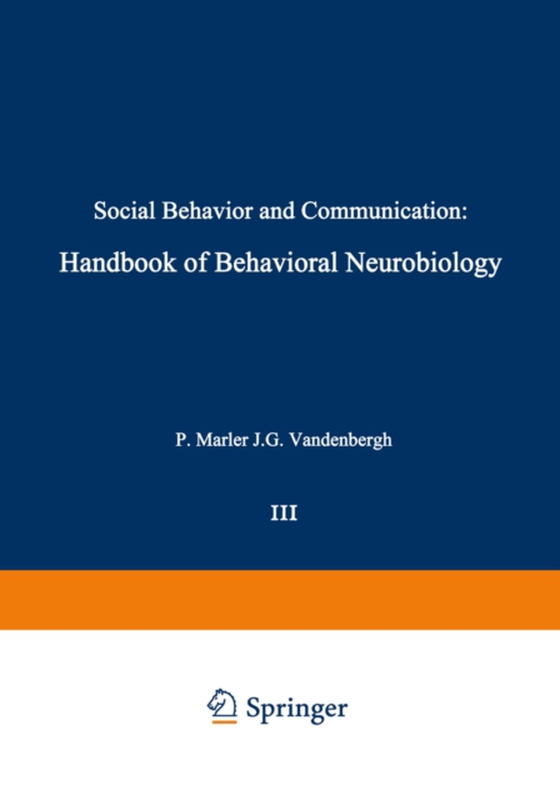
Social Behavior and Communication e-bog
436,85 DKK
(inkl. moms 546,06 DKK)
Other books in this series focus on behavior at the individual level, approached from the viewpoints of biochemistry, anatomy, physiology, and psychology. In this volume we show how the functioning nervous systems of interacting individuals are coordinated, with the ultimate creation of complex social structures. The intri- cacies of an individual's nervous system have been subject to intense i...
E-bog
436,85 DKK
Forlag
Springer
Udgivet
9 marts 2013
Genrer
Interdisciplinary studies
Sprog
English
Format
pdf
Beskyttelse
LCP
ISBN
9781461591160
Other books in this series focus on behavior at the individual level, approached from the viewpoints of biochemistry, anatomy, physiology, and psychology. In this volume we show how the functioning nervous systems of interacting individuals are coordinated, with the ultimate creation of complex social structures. The intri- cacies of an individual's nervous system have been subject to intense inquiry, and research at the chemical, cellular, and organ levels has made remarkable progress. Work at the social level has been conducted somewhat independently, by way of behavioral phenomena and communicative interactions. With the emergence of a large body of information from neurobiology, the beginnings of an integrated approach are possible. New data on social functions are presented in the chapters to follow, and the forward-looking reader may wish to reflect on how they clarify understanding of interactions between two or more independent nervous systems. The outcome is harmonious social structure and improvement in the inclusive fitness of group-living individuals. We believe that there is in prospect a new way of looking at social function that will ultimately increase our understanding of the highest and most complex levels of neurobiology. The modern approach to the study of social behavior involves more than the recording of interactions between animals. Each individual brings to the process of social interaction the implications of its prior genetic and experiential history.
 Dansk
Dansk

